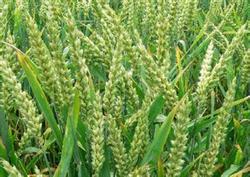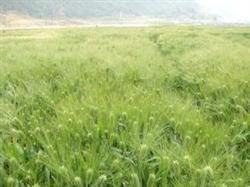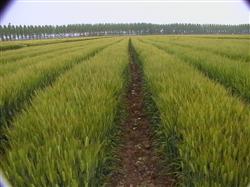Production of malting barley by seeking advantages and avoiding disadvantages

Under the influence of warm winter climate, the tiller of malting barley increased, the population became larger, the fertility was advanced, the jointing was earlier, it was easy to suffer from cold injury in late spring, and the risk of lodging increased. According to the reality of climate warming in winter, taking measures to prevent possible freezing injury and lodging in malting barley production can maximize advantages and avoid disadvantages. Select varieties according to local conditions according to local climate characteristics and planting habits, select suitable varieties of malting barley. Generally, winter varieties are selected between Huang and Huai, semi-winter varieties are selected in the north of Jianghuai, spring varieties are mainly in the south of Jianghuai, and spring varieties should be planted in the south of the Yangtze River. Continuous rainy weather often occurs in the south of Jianghuai and the south of the Yangtze River from April to May, and varieties with strong waterlogging tolerance and lodging resistance are selected. Properly postponing the sowing date in the climate of warming in winter, properly postponing the sowing date of malting barley can prevent plants from freezing injury caused by jointing before winter. The specific sowing time is aimed at strong seedlings overwintering. According to the index of 400 ℃ of spring variety and 450 ℃ of semi-winter variety and 500 ℃ of winter variety before overwintering, it is reasonable to determine according to the local climate characteristics. In normal years, winter barley in the middle and lower reaches of the Yangtze River is sown from mid-October to mid-November. Sowing should be postponed for 7-10 days in warm winter years, so as to avoid freezing injury caused by premature growth. In order to reduce the sowing rate control population in the production of malting barley, we should not only make full use of the advantage of high temperature in warm winter and winter to increase the tiller and spike, but also keep the malting barley population reasonable and reduce the lodging danger. The sowing rate can be reduced appropriately and the reasonable starting point of the population can be controlled. The suitable sowing rate is 8-10 kg per mu, and the basic seedling per mu is 120000-150000. Under the condition of warm winter climate, agricultural measures such as winter suppression, watering river mud and thinning seedlings should be taken in time to ensure that the population is reasonable. In the turning green stage, 40g / mu paclobutrazol can be sprayed to control the height and prevent toppling. Before the cold current in spring, appropriate series of moisture swimming to improve the effect of heat preservation and increase of soil moisture. The wheat seedlings with poor growth should be properly supplemented with balanced fertilizer to improve the cold resistance of the plants. After the occurrence of frost injury, fertilizer was applied according to the frostbite condition to promote the plant growth. Fields with frostbite and frostbite rate of main stems and tillers with a frostbite rate of less than 20% shall be applied with urea of 5 kg / mu and 7.5 kg / mu; fields with frostbite and frostbite rate of 30% Mu / mu with frostbite and frostbite rate of 60% of tillers will be applied 10 kg / mu of urea to promote tillering into panicles and reduce disaster losses.
- Prev

Weeding in barley field
The coastal areas of our province are mainly rice-wheat rotation. Due to the need of crop regulation, it is necessary to plant a certain area of malting barley every year. On the basis of optimizing the distribution of varieties, standardized cultivation measures can improve the quality indexes such as grain shape uniformity, 1000-grain weight and grain protein content of malting barley.
- Next

Four steps of planting Malting Barley
Actively developing the production of beer barley is of great significance to meet the needs of the development of beer industry and speed up the pace of farmers getting rich. In order to realize the high and stable yield of malting barley, four appropriate measures should be achieved: first, the improved variety of malting barley should be properly selected as a special barley for brewing beer. When planting, we should choose high yield.
Related
- The first cup of black tea in spring, the flavor and history of tea gardens in Kenya, Africa
- The computer can not only choose potatoes, but also grow tea rice. AI will grow winter oolong tea champion.
- It is not only the inflated tea bitten by insects, but also engraved with the four seasons tea in Beipu.
- The Oriental Beauty Tea Festival in Zhuxian County takes the stage at the weekend to experience the plus-size feast of oil tea.
- & quot; Oriental Beauty Tea & Exploration of Emei in Hsinchu, the hometown of quot;
- The new variety of strawberry "Tainong 1" dessert is the first choice with mellow aroma. Crimson gorgeous
- History of Tea in Taiwan: from Wild Inner Mountain to Export Tea Garden
- Two types of Taiwan Oriental Beauty Black Tea won the British three-Star Award for Childhood Tea Xiang Zhang Jiaqi changed from pilot to champion tea maker.
- Banana species and varieties: the planting history of Taiwan Xianren banana and dwarf banana is long, is banana disease resistant?
- Coffee planting Technology: Qianjie Coffee from Seedling to harvesting

